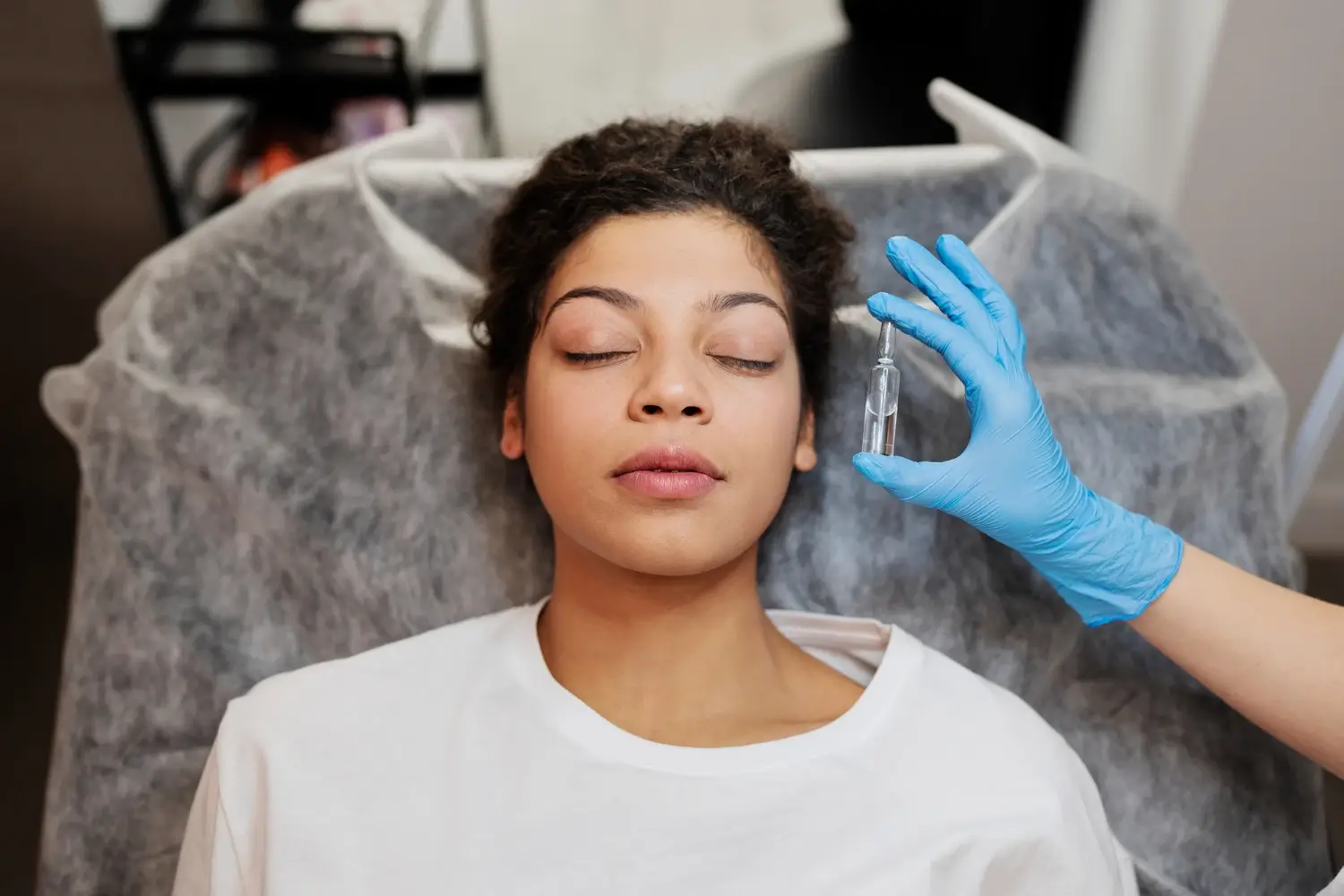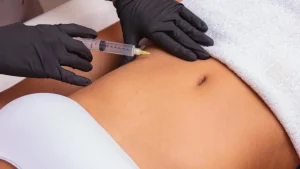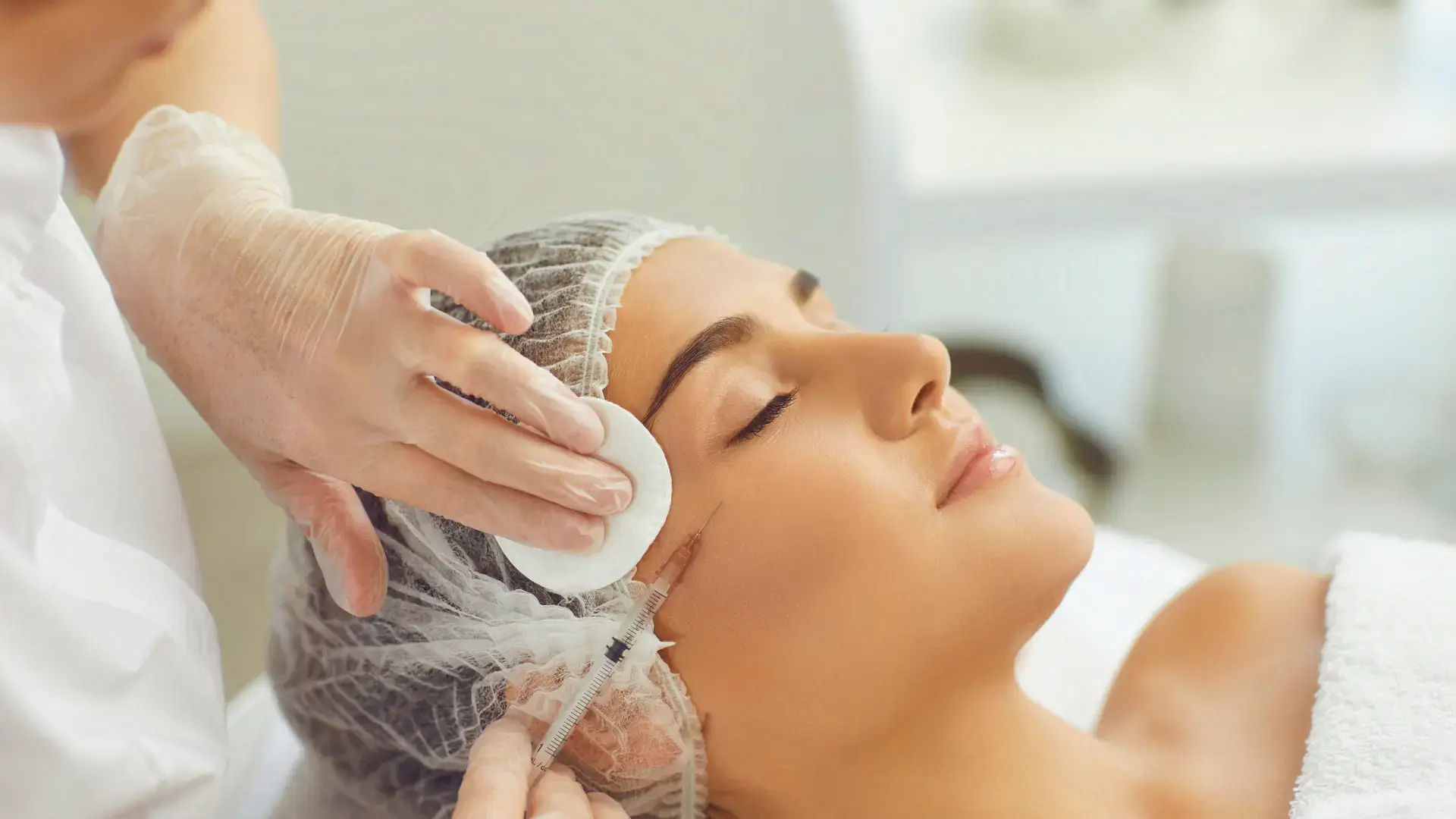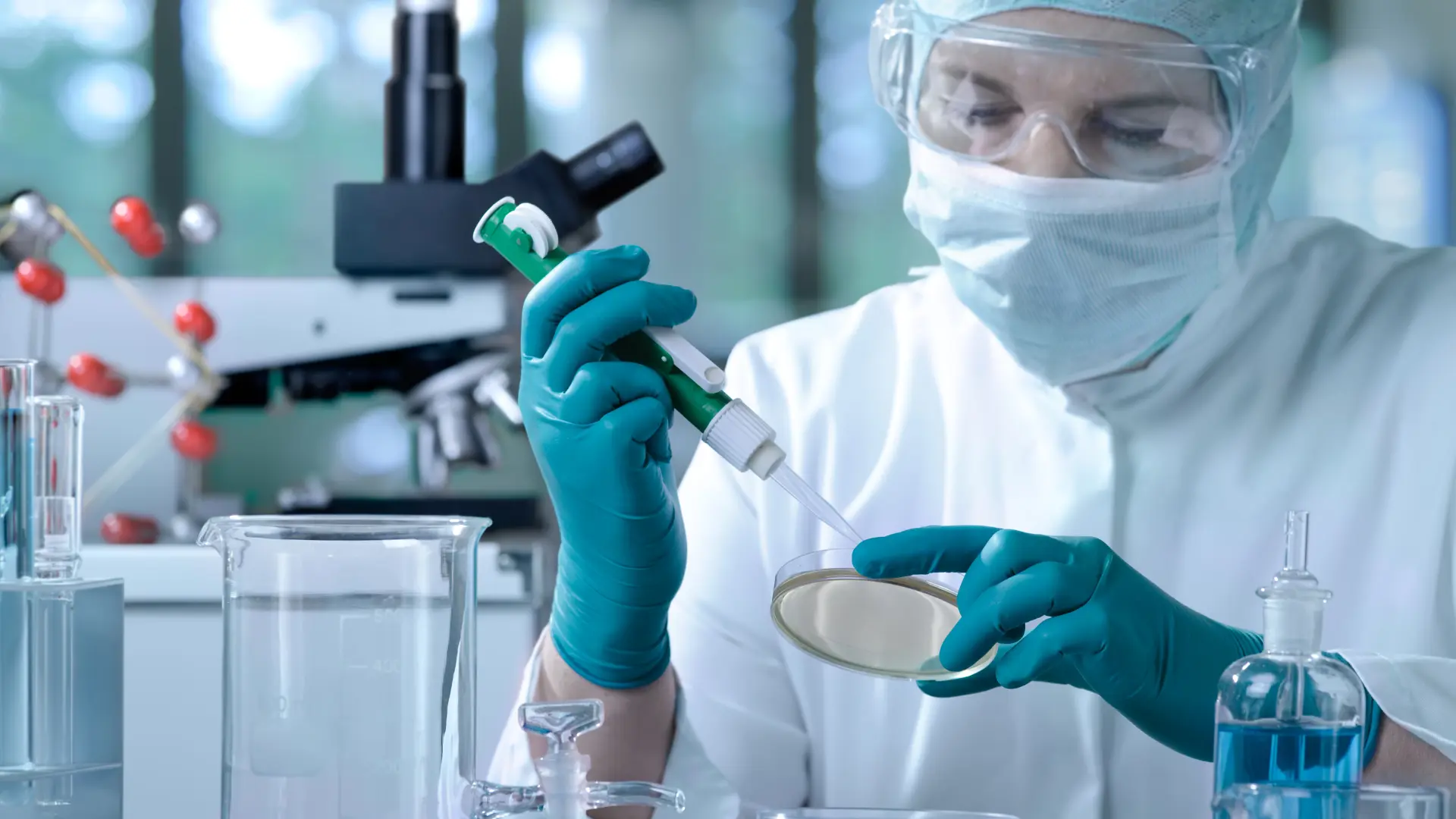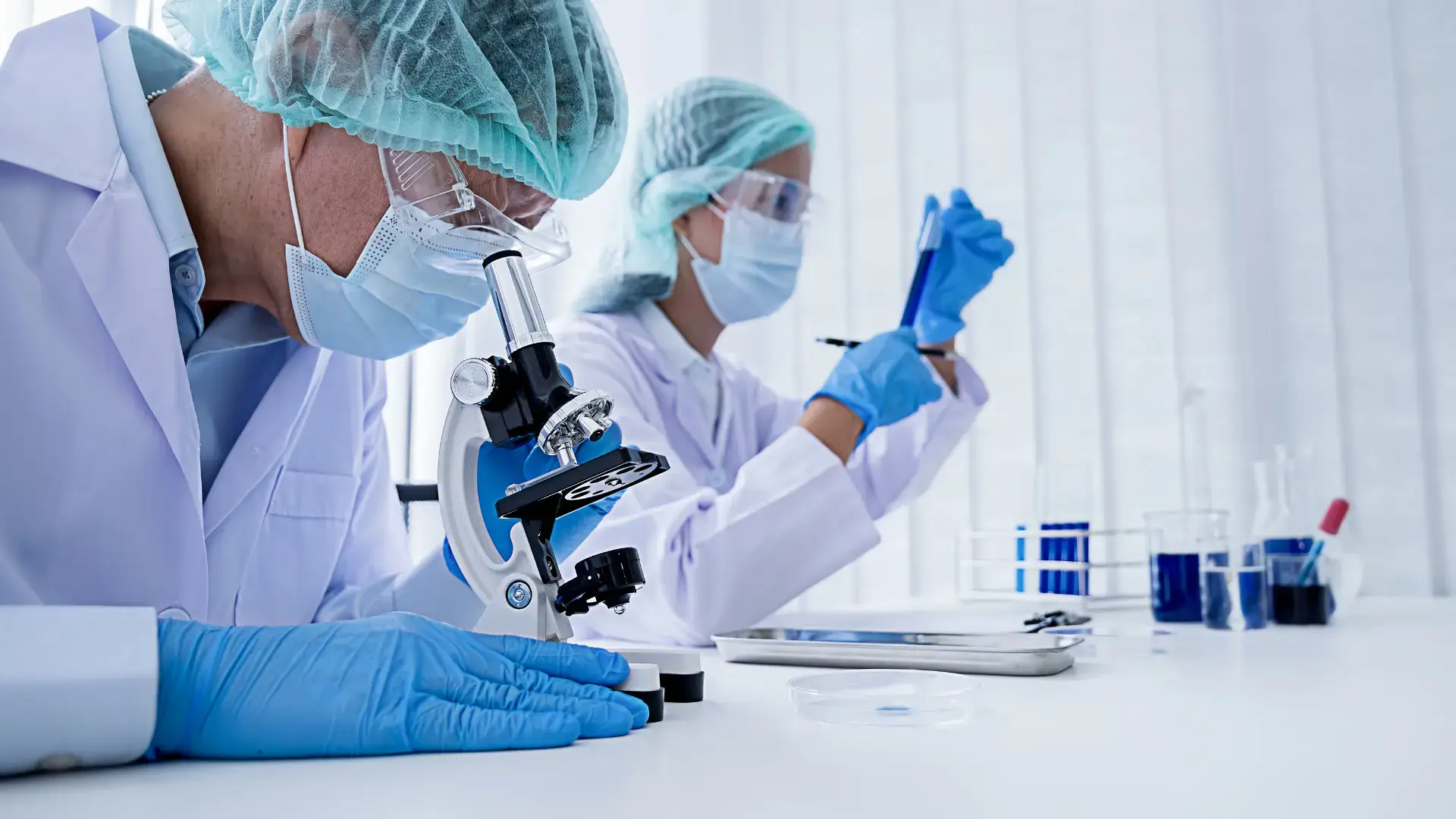Rejuran microneedling and injections are the two modes of administration of a Korean regenerative skin treatment.
Rejuran is derived from salmon DNA that contains biocompatible molecules, PN (polynucleotide) or PN-H (highly purified polynucleotide), that activate fibroblasts.
Although Rejuran is FDA-approved for topical application only, clinical practice has extended its use to transdermal and intradermal methods.
Microneedling with Rejuran and direct intradermal injection each have distinct mechanisms of action, depth of penetration, patient experience, and clinical outcomes.
Read on to learn how these two delivery modes differ in terms of efficacy, indications, recovery, and long-term benefits.
Key Takeaways
- Rejuran is FDA-approved in the U.S. for topical application only. This means microneedling is the only compliant delivery method, while injections are off-label.
- Both methods use salmon-derived polynucleotides to stimulate fibroblasts and promote extracellular matrix remodeling.
- Microneedling is helpful for mild textural issues, early signs of aging, and patients seeking minimal downtime.
- Injections work better for acne scarring, fine lines, periorbital aging, and structural photoaging.
- Microneedling with Rejuran is best used for maintenance after injections or as part of a combination therapy protocol.
- Microneedling should be avoided in patients with active acne, impaired skin barrier, coagulopathy, or a history of keloids.
What Is Rejuran Microneedling?
Rejuran microneedling refers to the topical application of PNs, the active component of Rejuran, in conjunction with microneedling procedures (also referred to as collagen induction therapy).
Rejuran’s active ingredient is salmon-derived DNA fragments, which are polynucleotides with molecular weights around 50–1500 kDa.
The FDA currently approves Rejuran only for topical application. This means microneedling is the only compliant delivery method for Rejuran use in clinical practice.
Once absorbed, Rejuran’s polynucleotides:
- Stimulate dermal fibroblasts via purinergic signaling and cAMP pathways
- Promote extracellular matrix (ECM) remodeling
- Improve skin hydration and elasticity by enhancing hyaluronic acid synthesis
Clinically, Rejuran microneedling is used for early photoaging, superficial fine lines, and skin texture irregularities, particularly in patients unwilling to undergo injectable procedures.
What Is Rejuran Injection?
Rejuran injections are highly purified polynucleotides administered intradermally via a microinjection technique.
The formulation of Rejuran Healer injectable contains 1% (20 mg/2 mL) of PN extracted from Oncorhynchus mykiss (salmon), which is known for its low immunogenicity, biocompatibility, and bioresistance to enzymatic degradation.
It is administered through a series of 0.01–0.03 mL microdroplet injections into the superficial to mid-dermis using a 33–34G needle, spaced 0.5–1 cm apart.
Rejuran Healer is widely used for:
- Mid-face rejuvenation
- Periorbital fine lines (Rejuran I)
- Acne scar remodeling (Rejuran S)
- Neck and décolleté rejuvenation
A 2022 randomized split-face clinical trial comparing PN-based injections to hyaluronic acid mesotherapy showed significantly greater improvements in roughness and pore volume in the PN group. [1]
The Benefits of Rejuran Microneedling vs. Injection
Both Rejuran microneedling and Rejuran injections use the same core of polynucleotide therapy. But their clinical efficacy and pharmacodynamics differ. Here’s how:
Skin Penetration and Bioavailability
Rejuran injections deliver PNs directly into the mid to deep dermis using fine 33–34G needles. The injections deposit Rejuran precisely around fibroblasts and extracellular matrix structures. They also have superior bioavailability and result in a stronger stimulation of collagen types I and III, elastin, and glycosaminoglycans.
In contrast, microneedling creates superficial microchannels, between 0.25 mm and 1.5 mm in depth. The channels increase skin permeability and allow topically applied PNs to diffuse into the upper papillary dermis. [2]
Microneedling increases skin absorption by up to 1000 times, but the amount of active compound reaching the deeper fibroblast layer remains limited compared to injection-based delivery.
Clinical Efficacy and Indications
Currently, there are no head-to-head clinical studies comparing the efficacy of Rejuran delivered via microneedling versus intradermal injection.
However, comparative insights can be extracted from data involving other biologically active compounds, such as botulinum toxin, delivered via similar routes.
A 2020 study compared microneedling and intradermal injection for delivering botulinum toxin A in facial hyperhidrosis. It found that microneedling caused less pain and yielded higher patient satisfaction. [3]
Rejuran injections are clinically preferred for structural dermal pathologies such as:
- Atrophic acne scars (using Rejuran S)
- Photoaged skin
- Fine lines and wrinkles (Rejuran Healer)
- Thin or crepey skin around the periorbital region (Rejuran I)
In clinical practice in Korea, skin rejuvenation with PN injections requires administering 2 mL every 3–4 weeks, for a total of three to four treatment sessions. [4]
In contrast, microneedling with Rejuran is more suited to superficial skin concerns, including:
- Epidermal hydration
- Skin luminosity
- Mild textural irregularities
- Early signs of aging
Microneedling is also useful in needle-averse patients.
The Downsides of Rejuran Microneedling vs. Injection
As with any aesthetic procedure, Rejuran treatment is associated with expected, transient side effects.
Problems With Using Rejuran for Microneedling
The most significant drawback of microneedling as a delivery method for Rejuran lies in its limited depth. A significant proportion of the active polynucleotide chains are lost on the surface or degraded enzymatically before reaching the upper to mid dermis. [5]
Polynucleotides that don’t reach the dermis are metabolized or removed via the lymphatics, leading to short-lived results. Patients, therefore, require more frequent microneedling sessions.
Without carrier molecules or encapsulation systems (e.g., liposomes, nanoparticles), the effective concentration reaching fibroblasts remains sub-therapeutic in some cases.
Moreover, the transdermal route is subject to variability in how drugs are absorbed through the skin, both between different individuals and within the same individual over time. [6] These differences arise due to underlying biological factors that influence skin permeability.
Problems With Using Rejuran Injections
Rejuran injection therapy is also not without drawbacks. The main concern is post-injection downtime and patient discomfort.
The technique requires multiple intradermal microinjections spaced 0.5–1.0 cm apart that lead to temporary papules or “beads,” swelling, and sometimes bruising. [4]
These visible wheals resolve within 24 to 72 hours, but they cause social downtime that deters some patients.
Incorrect depth or volume administration can also lead to nodule formation, Tyndall effect, or prolonged edema.
Again, Rejuran is not currently approved by the FDA for injection use. However, it has obtained regulatory approval and safety certifications in Korea. [7]
When to Choose Each Mode of Administration
Rejuran with microneedling is best suited for:
- Maintenance therapy post-injection
- Combined treatment protocols with radiofrequency ablation and lasers
- Patients preferring low-downtime options
However, it must be avoided in patients with active acne, skin barrier disruption, coagulopathy, or keloid predisposition.
In contrast, intradermal injections deliver high-concentration PNs and must only be used by physicians managing mid-to-deep dermal indications.
Patients with active inflammation or infection at injection sites or those poorly tolerant to multiple needle punctures should not get Rejuran injections.
Source 100% Original Rejuran at Unbeatable Pricing from Medica Depot
Rejuran delivers its polynucleotide-based skin rejuvenation benefits via both microneedling and intradermal injection.
The choice of delivery should align with the depth of the target pathology, patient preferences regarding downtime, and risk factors such as active acne, skin barrier integrity, and needle tolerance.
You should also note that Rejuran is FDA-approved for topical use only in the United States; injection use is off-label.
If you’re looking to add Rejuran to your service offerings, contact Medica Depot for genuine products backed by a 100% money-back guarantee.
You’ll also get access to our loyalty, price match, and referral programs, and peace of mind from knowing you’re working with a reliable, physician-only distributor. Place your order now!
FAQs
How Long Do Rejuran Injections Last?
Rejuran injections show visible results in about four weeks, and the effects usually last between six to twelve months. To maintain long-term benefits, a follow-up treatment every six to nine months is recommended.
What Is the Downtime for Rejuran Healer?
Rejuran Healer has a short downtime of two to five days. Mild redness, swelling, or tiny injection marks may appear after injections but subside within this period. Most patients can resume normal activities shortly after treatment.
Who Is Not Suitable for Rejuran?
Rejuran is not suitable for individuals with active skin infections, severe acne, keloid tendencies, bleeding disorders, or known allergies to salmon DNA. Pregnant or breastfeeding women should also avoid treatment.
References
- Lee YJ, Kim HT, Lee YJ, et al. Comparison of the effects of polynucleotide and hyaluronic acid fillers on periocular rejuvenation: a randomized, double-blind, split-face trial. Journal of Dermatological Treatment. Published online April 6, 2020:1-7. doi:https://doi.org/10.1080/09546634.2020.1748857
- Yadav S, Singh A. Microneedling: Advances and widening horizons. Indian Dermatology Online Journal. 2016;7(4):244-254. doi:https://doi.org/10.4103/2229-5178.185468
- Ebrahim H, Nassar A, Mousa MM, Khater E. Microneedling Delivery of Botulinum Toxin Versus Intradermal Injection in the Treatment of Facial Hyperhidrosis. The Journal of clinical and aesthetic dermatology. 2022;15(9):40-44. https://pubmed.ncbi.nlm.nih.gov/36213604/
- Rho NK, Kim HS, Kim SY, Lee W. Injectable “Skin Boosters” in Aging Skin Rejuvenation: A Current Overview. Archives of Plastic Surgery. 2024;51(06):528-541. doi:https://doi.org/10.1055/a-2366-3436
- Alkilani A, McCrudden MT, Donnelly R. Transdermal Drug Delivery: Innovative Pharmaceutical Developments Based on Disruption of the Barrier Properties of the Stratum Corneum. Pharmaceutics. 2015;7(4):438-470. doi:https://doi.org/10.3390/pharmaceutics7040438
- Farahmand S, Maibach HI. Transdermal drug pharmacokinetics in man: Interindividual variability and partial prediction. 2009;367(1-2):1-15. doi:https://doi.org/10.1016/j.ijpharm.2008.11.020
- Rejuran TAS 2023. Rejuran. Published 2023. Accessed May 12, 2025. https://rejuranusa.com/pages/rejuran_tas_2023
